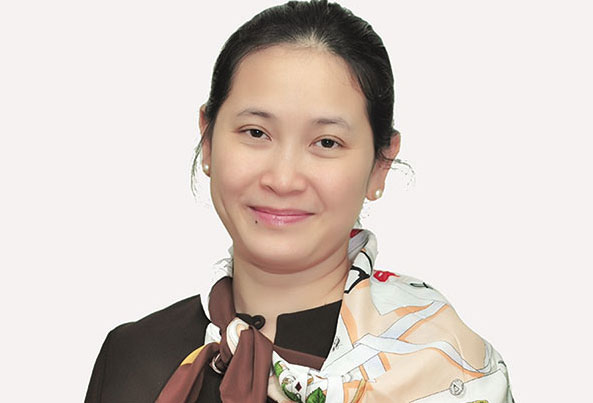PAN begins journey to feed the world
 PAN’s board member Le Le Hang spoke to VIR’s Nhu Phan about the company’s transformation story.
PAN’s board member Le Le Hang spoke to VIR’s Nhu Phan about the company’s transformation story.
Why has the company chosen to rebrand itself at this time?
We are now stepping into what we call the second phase of our expansion strategy. This follows the successful completion of the first phase in which we have been committed to building a strong platform in the agriculture and food processing industries.
In the past three years, inspired by the vision of becoming a leading agricultural and food company in Southeast Asia, we have finalised four big merger and acquisition (M&A) deals with a total value of VND1.5 trillion ($71.5 million) to buy into top agricultural and food processing companies such as National Seed Company (NSC), Southern Seed Company (SSC), BIBICA Corp. (BBC), Long An Food Processing Export JSC. (LAF), and Aquatex Ben Tre (ABT). NSC and SSC, which were also shortlisted in the Forbes 200 typical Asian small- and medium-sized companies in 2013, are currently two leading seed companies in Vietnam, which together form the agricultural base for PAN. BBC is a reputed confectionery maker in Vietnam with about 100,000 points of services. ABT is among a few fisheries exporters that can access developed markets with an efficient pangasius production line. Finally, LAF is a prestigious cashew processing company with premium products.
The diversified portfolio of the strongest brands in each sector gives PAN access to high-class facilities, which serve as a firm foundation for us to develop new products and distribution channels. This enables us to meet the demands of consumers for safe and traceable food products at reasonable prices.
Over the first eight months of this year, we have increased our stake to 42.3 per cent in BBC, to 61 per cent in LAF, and to 62.9 per cent in NSC. Today, PAN’s shareholders comprise of such reputed names as NDH, SSI, SSIAM, CSC, ORIX, Singapore-based TAEL Partners and GIC Private Limited, PYN Fund Management, and the World Bank’s arm IFC.
In our second phase, PAN is expanding into retail and distribution sectors to be able offer the best foods at reasonable prices to consumers. The change of our brand identity is timely and shows our readiness for this phase.
How have you managed to successfully expedite your M&A deals?
We have taken two approaches, namely “We are” and “Bottom-up”. With the “We are” motto, every acquired company becomes a member of the PAN family and receives our full support to improve its performance without undue hard pressure of unnecessary or immediate changes. And with the “Bottom-up” approach, we focus on the optimisation of available resources so as to enhance product and corporate values instead of copying expensive models in the developed world.
We have also adopted clear criteria for each M&A deal: a successful company with a ready platform for rapid development and sustainable successes, and a company that is open to co-operate with PAN to optimise available resources and attract new investment for greater innovation.
After each deal, we have not only witnessed an overall growth in revenues and the reputation of the holding company, we have also seen the expansion of our subsidiaries as well. Specifically, our consolidated sales have increased by a compound annual growth rate (CAGR) – the mean annual growth rate of an investment over a specified period of time longer than one year – of 58 per cent between 2012 and 2014. Our market capitalisation increased by 13 times from 2012 to August 31, 2015, reaching almost VND3 trillion ($143 million) and ranking us among the top 50 companies listed on Vietnam’s stock market.
In view of our subsidiaries’ development, NSC’s growth rate expanded from 9 per cent in 2013 to 20 per cent in 2014 and its profit growth rose from 22.9 per cent to 29 per cent. LAF’s revenue and total assets rose 29 per cent and 15 per cent on-year respectively in 2014, after the M&A.
Can you briefly describe a typical M&A deal PAN has completed?
We can look at the recent deal where NSC acquired SSC, and which won the Vietnam M&A award. In this deal, PAN owns 62 per cent of NSC, and NSC acquired 61.4 per cent of SSC.
What’s favourable about this deal is that both companies are operating in the seed industry with clear strategic advantages such as market location (NSC more in the North, SSC more in the South), similar operation models, and so on.
The deal, however, faced challenges commonly seen in other M&As. First, is how to integrate two companies with two culture identities into a single system and make the resources more efficient, achieving the powerful formula 1+1>2. Second, is how to integrate the two companies’ market shares in certain provinces to avoid direct competition. All these have been our top management’s priorities, and we believe that later in 2016, the restructuring will be completed with positive results.
What the stars mean:
★ Poor ★ ★ Promising ★★★ Good ★★★★ Very good ★★★★★ Exceptional
Latest News
More News
- Growth beckons for GenAI startups in Vietnam (November 21, 2024 | 17:47)
- SABECO to elevate Vietnam's beverage industry to global standards (November 21, 2024 | 17:36)
- ABeam Consulting Vietnam introduces BSQCD Purchasing Strategy Framework (November 21, 2024 | 16:40)
- Major railway requires debt considerations (November 21, 2024 | 12:07)
- Reviving a new life cycle for plastic waste (November 21, 2024 | 09:16)
- Key balances maintained for industrial production (November 21, 2024 | 08:00)
- Ecolean Vietnam honoured with prestigious sustainability award (November 19, 2024 | 10:01)
- HEINEKEN Vietnam’s clear path towards net-zero (November 18, 2024 | 15:13)
- VLCA 2024 honours corporate governance excellence as listed companies raise the bar (November 18, 2024 | 09:00)
- High-tech personnel to drive competition (November 17, 2024 | 09:21)
















 Mobile Version
Mobile Version